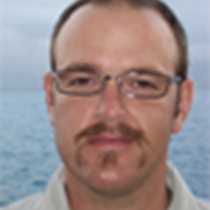Genovesa Island
The National Geographic Islander takes us north of the equator to the only northern island that we are allowed to land on, Genovesa. This island is spectacular in the aspect that it is a massive volcanic caldera that we will navigate into and anchor with the caldera’s walls surrounding us. An early morning kayak outing allows us close encounters with frigate birds, swallow tailed gulls, red-footed boobies, and yellow crowned night herons, a wonderful way to welcome the day. Our united group lands at Darwin Bay beach and we proceed to notice something unique about this area, the avian wildlife seems to be excessive with frigate birds dive bombing red-footed boobies and swallow-tailed gulls protecting their nesting areas. Genovesa has a geographic position that allows an extremely high carrying capacity for seabirds as the surrounding waters are rich with life. Red-footed boobies are abundant as they care for their single eggs with some small hatchings recently emerging. Great frigate bird males show their bright red inflated gular sacs as they try to attract females. One of the smallest bird species on this island, the Darwin cactus finch is busy alongside the Galápagos carpenter bee as they feast on the Opuntia prickly pear cacti flower. We close our morning with a swim from the beach area with white-tipped sharks being spotted and a leopard flounder skimming the bottom.
The afternoon brings us even closer to the struggle for life on this island as we climb Prince Phillips steps towards the outer coastal cliff. We begin our search for the Galápagos short-eared owl among the fleeting storm petrels that nest along the coast. Short-eared owls show a very strange behavior here on Genovesa as they have filled an ecological niche that was never occupied by the Galápagos hawk. The owls here are diurnal, looking for their daily nutrition among the storm petrels and they are seen trying to catch their prey as they hop up and take just a couple wing beats and chase their meal. Our afternoon closes with a strange optical display as the setting sun refracts light through a moisture laden cloud, not quite a rainbow but the colors are present and we are content with not only Galápagos but with life.




